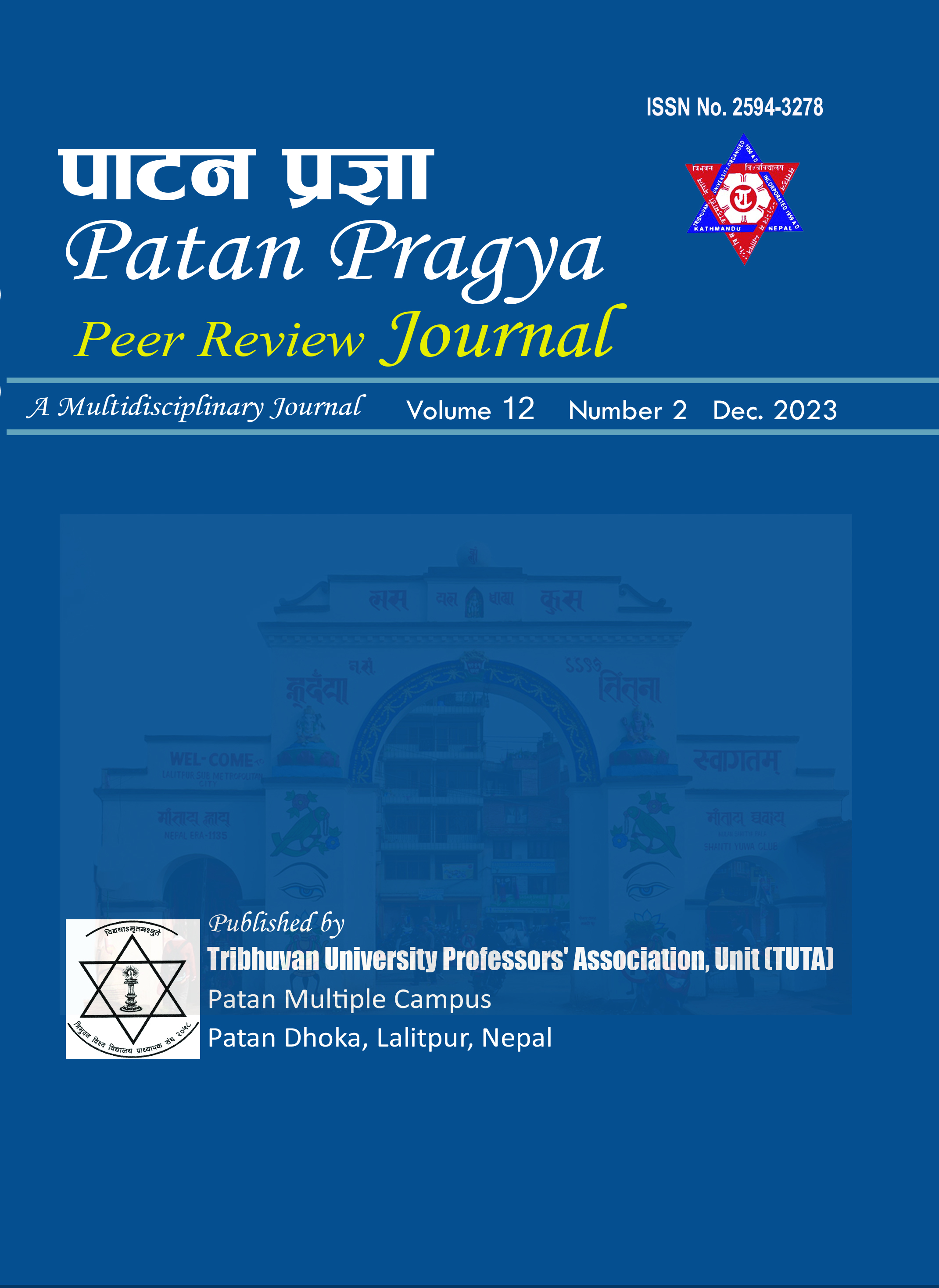Assessing Tetracycline susceptibility in multidrug-resistant Staphylococcus aureus: A clinical study in Kathmandu
DOI:
https://doi.org/10.3126/pragya.v12i02.64198Keywords:
Staphylococcus aureus, MRSA, TetracyclineAbstract
Introduction: Staphylococcus aureus, recognized as an opportunistic pathogen, is frequently implicated in diverse human infections. Managing multidrug-resistant S. aureus poses a significant challenge in the clinical sector. Beyond B-lactam antibiotics, healthcare practitioners commonly prescribe Glycopeptides, Tetracycline, Quinolones, and Macrolide-Lincosamide-Streptogramin B antibiotics as alternative treatments for such infections. Consequently, this study was undertaken to evaluate the susceptibility of multidrug-resistant S. aureus to tetracycline in clinical samples.
Methods: The study spanned 15 months, from March 2020 to May 2021, during which clinical samples were collected from three distinct hospitals in Kathmandu-Dirghayu Guru Hospital, Chabahil; Bhaktapur Cancer Hospital, Bhaktapur; and Shankarapur Hospital, Jorpati. Sample processing and laboratory work were conducted in the Microbiology Laboratory of Dirghyau Guru Hospital to assess the prevalence of different multidrug-resistant (MDR) phenotypes among S. aureus and their correlation with Methicillin resistance. The study included 266 isolates of S. aureus, and Methicillin resistance was determined using the Cefoxitin disc diffusion method.
Results: Among 2004 clinical samples processed, 266 (13.27%) isolates were S. aureus. The multidrug resistant strain isolated from Outpatient department was 56.84% (54/95) and from inpatient department, the data was 43.15% (41/95). Among the 266 S. aureus, 28.94% Methicillin resistant S. aureus (MRSA) and 71.05% Methicillin sensitive S. aureus (MSSA) isolates were detected. Tetracycline resistance was found in 9.8% of total S. aureus isolates whereas 27.36% (26/95) among multidrug resistant S. aureus isolates. Resistance to Tetracycline was higher in MRSA as compared to MSSA.
Conclusion: The detection rate of MRSA emphasizes the urgency to improve healthcare practices to control the spread of MRSA infections. Tetracycline can be used as a viable alternative antibiotic for combating S. aureus infections, particularly in Kathmandu.
Downloads
Downloads
Published
How to Cite
Issue
Section
License
© Tribhuvan University Teachers' Association (TUTA), Patan Multiple Campus Unit

